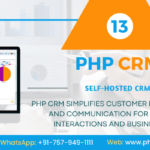Employee Leave Management System
The Term “Leave Management” Refers To The Process Of Managing Employee Requests For Time Off. It’s Also Known As Time-off Management, And It Includes Things Like Sick/wellness Leaves, Parental Leaves, Menstrual Leaves, And More. The Ultimate Goal Is To Ensure That Employees May Take Use Of Their Perks Without Interfering With Business Operations.
Types Of Leaves
Sick Leave
Sick Leave Is Paid Time Off That An Employer Provides To Allow Employees To Recuperate From Illness And Care For Their Health. Sick Absences Are Critical Because They Allow Employees To Rest Without Fear Of Losing Compensation. In Many Countries, Sick Leave Is A Legal Requirement To Ensure The Employee’s Health. You Must, However, Be Flexible With Your Sick Leave Policies And Allow Employees To Take Extended Breaks If They Have Serious Health Problems.
Casual Leave
These Leave Are Offered To Employees To Allow Them To Take Time Off For Any Life Events They May Have, Such As Traveling To Another Country Or Attending Weddings. Allowing Employees To Take Paid Casual Leave When Needed Will Help Them Prioritize Their Personal Lives While Still Feeling Valued At Work.
Public Holiday
Government-issued Leave Days Are Known As Public Holidays. Every Institution, Including Schools, Banks, Government Offices, And Even Private Businesses, Must Respect These Holidays. Independence Day, Memorial Day, Labor Day, Bank Holidays, And Any Other Nationally Recognized Day, Such As The Death Of A Significant Leader Of The Country, Are Examples Of Public Holidays.
Look Into The Holidays That Your Government Has Authorized For Your Country To Include These Leaves In Your Leave Policy.
Religious Holidays
Christmas, Eid, Easter, Holi, Yom Kippur—religious Holidays Are Important To Your Employee, And They Will Want The Day Off To Spend Time With Their Family And Observe The Event. It’s Critical That You Accommodate Their Vacations By Giving Them The Choice Of Taking Time Off On The Festival’s Day.
Take Track Of Every Religious Holiday Using Online Resources, And Encourage Employees To Send You A Message Each Year Noting The Religious Holidays For Which They Would Like Time Off.
Maternity Leave
maternity Leave Is A Vital Time For New Mothers, From Caring For The Newborn To Recovering From The Delivery. Make Sure Company Policy Allows For This Type Of Leave So That Staff Don’t Have To Worry About Their Jobs While Caring For Their Newborn.
The New Mother Is Entitled To Maternity Leave For A Period Ranging From 7 To 17 Weeks, Depending On The Country In Which The Company Is Headquartered. In An Ideal World, The Mother Should Be Given 14 Weeks To Care For Their Infant During The First Three Months Of His Or Her Life.
You Should Also Be Willing To Provide Additional Leave Days In The Event Of Postpartum Problems.
Paternity Leave
New Fathers—husbands Or Partners Of Pregnant Women, Surrogate Parents, Or Adoptive Parents—are Offered Paternity Leave To Care For Their Newborns Without Anxiety.
Because Such Absences Are Not Required By Law, Companies Rarely Provide Paternity Leave For The Birth Of Their Child. However, Hr Professionals Must Be Aware Of The Pressures Of Transitioning To A New Baby And Caring For The Child In The Initial Few Days.
Bereavement Leave
As HR, You Should Have A Bereavement Leave Policy In Place That Allows Employees To Grieve, Manage Any Duties They May Have As A Result Of The Death, And Request Bereavement Leave Without Difficulty.
Depending On The Closeness Of The Relative, Most HR Departments Provide 3 To 7 Days Of Morning Leave To Their Employees. You Can Read Our Article On How To Design A Bereavement Leave Policy If You’re Not Sure How To Do So.
Compensatory Leave
Compensatory Days Off Are Available To Employees Who Have Worked More Hours Than They Were Required To. Ensure That Any Employee Who Has Worked Longer Hours Or On Days When They Were Off (Such As Saturday) Is Given A Compensating Day Off, Or “Comp Off.”
Compensatory Time-off Must Be Automatically Recorded In Your Backend, And Employees Must Be Alerted That They Are Entitled To An Extra Day Of Leave For The Period They Worked.
HR Role In HR Leave Management
The Primary Function Of An Hr Administrator Is To Keep Meticulous Records Of All Leave Transactions For Each Employee. It’s Also A Requirement Under The Law.
The Admin Must Also Keep Track Of The Net Leave Balance For Each Leave Type In Addition To The Leave Transactions. Individual Leave Transactions Must Match The Leave Balances.
While Many Leave Types Provide Annual Or Monthly Stipends, Certain Leave Types Do Not. There Is No Leave Balance For These Types Of Leaves, And Employees Are Only Allowed To Take Them Under Particular Circumstances.
Importance Of Leave Management
Employees Taking Unscheduled Or Excessive Leave Can Cause Organizations To Lose Productivity. Although Unexpected Challenges Might Arise At Any Time, Firms Must Keep A Detailed Record Of All Employee Absences In Order To Ensure Good Working Conditions And Steady Efficiency Month After Month.
• Time Is Money In Business; Thus Leave Management Is Critical. Inconsistent Leave Policies Across The Organization Can Cost A Firm A Lot Of Money.
• Unplanned Leave Can Lead To Missed Deadlines, And Targets, As Well As Lost Money.
• Roster Management, Ad-hoc Placements, Guest Participation, And Other Emergency-related Arrangements Can Be Made Ahead Of Time.
• Employees Must Plan Their Extended Leave Well In Advance, And Having A Streamlined, Automated System In Place To Handle Leaves And Adjust Work Situations In Advance Demonstrates A Strong Work Ethic And A Streamlined Work Process.
• Absenteeism Is Decreased And Transparency Is Increased When There Is An Appropriate Channel Via Which Employees May Apply For Leave And Access Their Information Independently.
• Employees Are Given A Huge Boost And, In Certain Cases, A Reality Check On Their Attendance And Performance In Relation To Their Leave Account.




